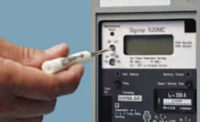Maintain enterprise-wide communication & reduce arc flash exposure

Know the risk
An arc flash occurs when powerful, high-amperage currents travel, or arc, through the air. This can occur when high voltage differences exist across a gap between conductors, resulting in an immediate release of energy with temperatures that reach as high as 36,000 degrees Fahrenheit. Given the extent of injury possible, it is not uncommon for an employee exposed to arc flash to never fully recover.
Physically, those exposed can suffer severe burns that also result in chronic pain and disfiguring scars. Along with physical manifestations, victims may also experience prolonged mental and emotional reactions after an incident, including anxiety, depression or other psychological symptoms. This level of damage can result in a high cost of injury. Some workers may not be able to return to their pre-injury job, which requires employers to bear the costs associated with lost productivity, reduced competitiveness, employee rehiring and retraining, as well being subject to increases in workers’ compensation premiums.
Arc flash can be caused by many things, including dust, accidental contact, corrosion, faulty installation, dropping tools and condensation, but the most common cause of arc flash events is human error. Regardless of training or experience, any slight distraction or minute mistake when working on or around energized equipment can cause phase-to-phase and phase-to-ground contact, igniting an arc flash.
For instance, when maintaining or repairing equipment, the failure to use insulated tools or dropping any conductive items into the enclosure, such as panel board screws, can increase a worker’s exposure to arc flash.
Communication and the cabinet
The need for constant connectivity in virtually any industrial environment created the demand for a solution that enables enterprise-wide communication. Cabinets and enclosures are designed to house networking and control equipment in the field to provide access and process monitoring even in harsh environments.
Though storing these electronic devices inside an enclosure does protect them from exposure to the elements, it also creates a risk of igniting an arc flash each time the enclosure is opened. This occurs when an arc fault occurs to the equipment within the enclosure. The fault heats the air, causing it to expand and creating intense pressure inside the enclosure. When the enclosure is opened, the pressure is released and an arc flash explosion is possible, which not only causes burns, but can also propel shrapnel or other objects. Another safety concern when working on equipment housed in an electrical enclosure is the conductive dust that can collect inside the unit.
Unfortunately, given industry dependence on networking for continued operation, this equipment requires regular, direct operator monitoring and managing, such as manually collecting data or changing performance parameters, in order to ensure proper functionality.
This means that any time a device must be accessed, operators must open the enclosure or cabinet, making themselves vulnerable to igniting an arc flash. It is crucial that any operator directly responsible for maintaining this equipment is trained and experienced in order to minimize any human error that could lead to the ignition of a dangerous and possibly deadly arc flash blast.
Distributed I/O: The “outside the box” safety solution
While no solution can completely eliminate the risk of arc flash hazards, there are solutions that minimize engineers’, technicians’, and maintenance workers’ exposure to such risks. Since there is a potential for an arc flash occurrence every time the electrical enclosure is opened, being able to take distributed I/O equipment out of the electrical enclosure, which may contain live voltage with sufficient energy for an arc flash event, and mount it in the field, minimizes risk exposure and ensures continued connectivity. Reducing the need to open that cabinet may be one of the best ways to reduce the incident of arc flash in a facility.
Also, engineers and maintenance workers often require frequent access to distributed I/O equipment and controls to maintain continued production, so using an efficient, safe method for personnel interaction is crucial. Mounting equipment and controls outside the electrical enclosure provides engineers with easy and immediate access to it without opening the enclosure. This not only ensures the same level of connectivity and communication, but also enhances operator safety.
For additional communication flexibility, distributed I/O products are engineered for durability, allowing installation in a wide range of demanding plant environments. Featuring IP ratings, such as IP65, IP67, IP68 and IP69K, these products can reliably perform in dusty, wet and harsh environments without risk of element ingress. Some distributed I/O solutions can even withstand heavy washdown conditions and total submersion.
This inherent durability allows distributed I/O products to be effectively removed from the electrical enclosure and exposed to the application environment without malfunctioning, causing network faults, service interruptions, or arc flash ignition.
Increase connectivity with improved safety
The gravity of this danger requires plant managers to be proactive in selecting the ideal safety solution that protects employees without impeding productivity or equipment accessibility. When it comes to safeguarding against arc flash hazards, plant managers need to think outside the box to prevent injuries while increasing visibility over control equipment and improving productivity. Though operators can be trained to reduce the risk of injury when accessing controls, distributed I/O is mounted outside the enclosure to ensure continued, reliable connectivity without putting employees in harm’s way.
Looking for a reprint of this article?
From high-res PDFs to custom plaques, order your copy today!





